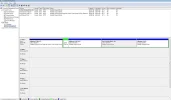- Thread Author
- #1
I have an Asus X64 desktop machine. Last year I formatted the [1 terabyte] hard drive for a clean install of X64 Windows 7 Ultimate. I tried numerous times to install the X64 Windows 7 Ultimate, but it was a no-go. I ended up installing the X86 Windows 7 Ultimate on my X64 machine instead. Since then I have corrected the problem(s) preventing me from installing the X64 Windows 7 Ultimate. So, long story short. I am duel booting two versions of Windows 7 Ultimate utilizing two partitions. I prefer the X64 as I have 8 GB's of RAM and the X86 only recognizes 4 GB's.
In addition to that I have a third partition with Windows Developer Preview. I can also boot into Ubuntu 12.4 although I did not specifically create a separate partition for that OS.
So, I'm quad-booting.
I've decided to eliminate all partitions, go back to a single hard disk, and begin utilizing VMWare Workstation 8 for any and all other OS's. But my problem is I don't quite understand the MBR fully. I wish to keep my X64 Windows 7 Ultimate but it was the second OS installed behind the X86 Windows 7 Ultimate.
I guess what I am asking, "Is there a way to get the MBR to reflect the X64 Windows 7 Ultimate so that I can format and delete the partition of the first installed OS?"
Yeh, I screwed up but it made since at the time.
In addition to that I have a third partition with Windows Developer Preview. I can also boot into Ubuntu 12.4 although I did not specifically create a separate partition for that OS.
So, I'm quad-booting.
I've decided to eliminate all partitions, go back to a single hard disk, and begin utilizing VMWare Workstation 8 for any and all other OS's. But my problem is I don't quite understand the MBR fully. I wish to keep my X64 Windows 7 Ultimate but it was the second OS installed behind the X86 Windows 7 Ultimate.
I guess what I am asking, "Is there a way to get the MBR to reflect the X64 Windows 7 Ultimate so that I can format and delete the partition of the first installed OS?"
Yeh, I screwed up but it made since at the time.
